Collectif Pierre Jeanneret
1896-1967
Pierre Jeanneret (1896-1967), an architect and designer of furniture, be it private or urban, worked for many years with his cousin Le Corbusier, particularly through the creation and organization of the CIAMs (International Congresses of Modern Architecture). In the shadows and discretion that suited him, he produced an oeuvre attesting to an original and demanding way of thinking. Between the two men there was a difference in approach. Precisely where Le Corbusier preferred order and organization, Pierre Jeanneret had ideas which he himself described as “always a bit anarchic”, and, throughout his life, he cultivated the spirit of an experimenter, for example assembling found materials, the fruit of his observation. In spite of everything, at the dusk of his life, he declared that he was “the architect closest to Le Corbusier where action was concerned.”
In 1950, at the invitation of Nehru, the two men were the principal project managers for the construction of the city of Chandigarh, designed to become the capital of the State of Punjab, after the Indo-Pakistan war. Today, the city contains the World’s most important concentration of the works of Le Corbusier and Pierre Jeanneret. For fifteen years, Pierre Jeanneret devoted all his efforts to that project. On a surface larger than that of the city of Paris, for a population that today exceeds one million inhabitants, what was involved was building not only a business district, an industrial sector and an administrative quarter, but also thoroughfares and residential neighborhoods. Pierre Jeanneret surrounded himself with a team of young Indian architects. He ended up by settling in Chandigarh and, in questioning his own ideas and conceptions, he often adopted the Indian viewpoint. For himself and Le Corbusier he summed up the meaning of that thoroughly excessive adventure with the striking words: “In a way, Chandigarh was for the two of us a clearing in the human jungle”.
He was thus forever placing himself at the crossroads of his two main concerns: designing objects for inhabitants and asserting the power of invention as the universal value of the modern movement. He only left Chandigarh in 1965 because of sickness, and he died a few months later in Geneva, in 1967.
 Sofa set, 1952/56
Sofa set, 1952/56
 Sofa set, 1952/56
Sofa set, 1952/56
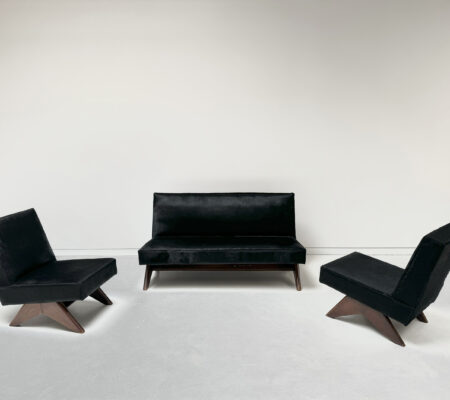 Sofa set, c.1955-56
Sofa set, c.1955-56
 “Advocate” armchair, circa 1955-56
“Advocate” armchair, circa 1955-56
 “Advocate” armchair, circa 1955-56
“Advocate” armchair, circa 1955-56
 “Senat” armchair, circa 1959-60
“Senat” armchair, circa 1959-60
 “Senat” armchair, circa 1959-60
“Senat” armchair, circa 1959-60
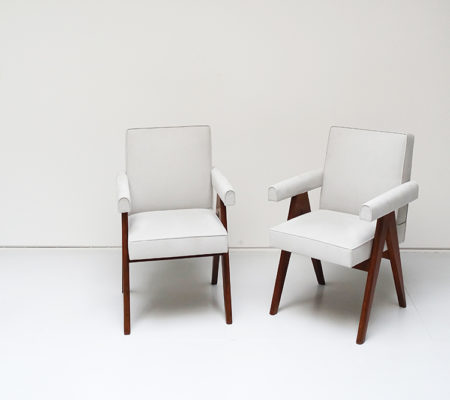 “Senat” armchair, circa 1959-60
“Senat” armchair, circa 1959-60
 Sofa, 1955-56
Sofa, 1955-56
 Sofa, 1955-56
Sofa, 1955-56
 Bed, 1952-56
Bed, 1952-56
 “Easy” armchair, 1952/56
“Easy” armchair, 1952/56
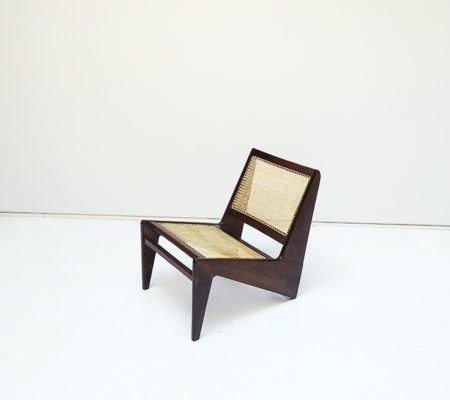 Kangoo Chair, circa 1960
Kangoo Chair, circa 1960
 “Office” chair, 1955-56
“Office” chair, 1955-56
 “Type chairs”, 1958-1959
“Type chairs”, 1958-1959
 Chair, circa 1960
Chair, circa 1960
 “Library” chair, circa 1959
“Library” chair, circa 1959
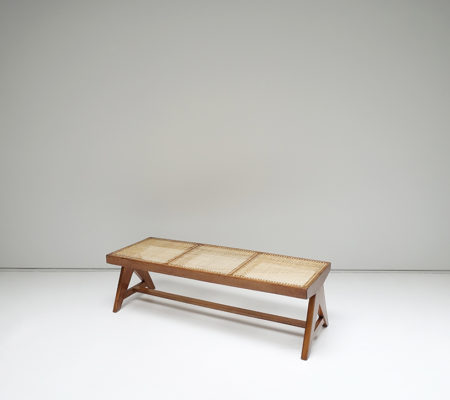 Bench, 1955-56
Bench, 1955-56
 High stool, circa 1965-1966
High stool, circa 1965-1966
 High stool, circa 1965-1966
High stool, circa 1965-1966
 “Committee table”, 1963-1964
“Committee table”, 1963-1964
 Lighting table, 1952/56
Lighting table, 1952/56
 Large table PGI, circa 1957
Large table PGI, circa 1957
 Small table PGI, circa 1960
Small table PGI, circa 1960
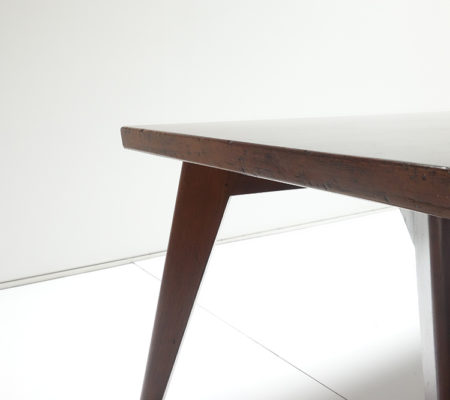 PGI table, circa 1956
PGI table, circa 1956
 “Judge lunch table”, circa 1954-1955
“Judge lunch table”, circa 1954-1955
 Square table, 1961
Square table, 1961
 Triangular coffee table, 1952/56
Triangular coffee table, 1952/56
 Desk, circa 1960
Desk, circa 1960
 Desk, 1957-58
Desk, 1957-58
 Desk, circa 1952
Desk, circa 1952
 Screen, c.1957-58
Screen, c.1957-58
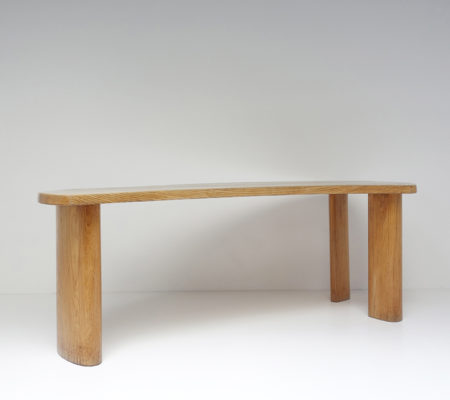 Free form desk, circa 1946
Free form desk, circa 1946
 Sideboard, circa 1947
Sideboard, circa 1947
 Armchair B301, 1929
Armchair B301, 1929
 Armchair B301, 1929
Armchair B301, 1929
 Chair, circa 1950
Chair, circa 1950
 Sideboard, circa 1947
Sideboard, circa 1947
 In situ
SHARED PASSION – Parcours des Mondes – Didier Claes & Jousse entreprise 5 Sep 2023 - 10 Sep 2023
In situ
SHARED PASSION – Parcours des Mondes – Didier Claes & Jousse entreprise 5 Sep 2023 - 10 Sep 2023
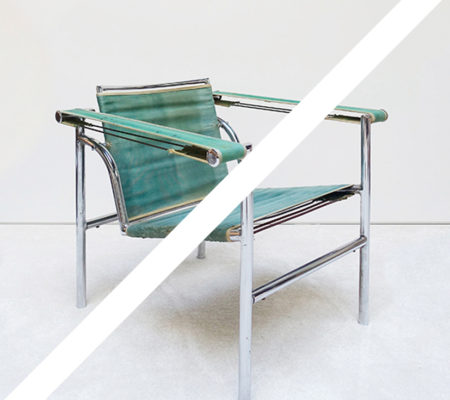 In situ
PIERRE JEANNERET / LE CORBUSIER / CHARLOTTE PERRIAND 14 May 2020 - 21 May 2020
In situ
PIERRE JEANNERET / LE CORBUSIER / CHARLOTTE PERRIAND 14 May 2020 - 21 May 2020
 In situ
Chandigarh : Pierre Jeanneret / Le Corbusier, 2015 23 Oct 2015 - 21 Nov 2015
In situ
Chandigarh : Pierre Jeanneret / Le Corbusier, 2015 23 Oct 2015 - 21 Nov 2015
 Hors les murs
Berlin-Paris, 2012 29 Jun 2012 - 21 Jul 2012
Hors les murs
Berlin-Paris, 2012 29 Jun 2012 - 21 Jul 2012


